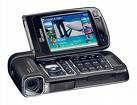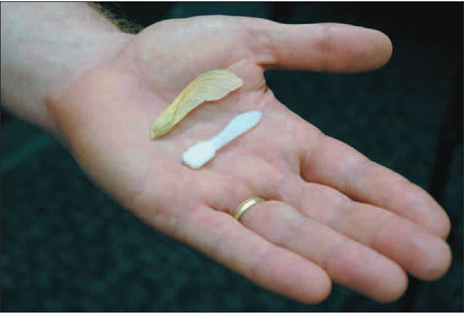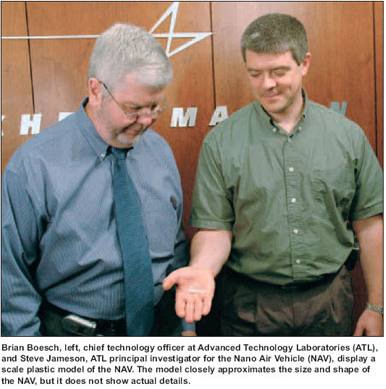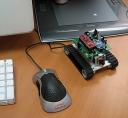 Some call them mobile phones others cellular phones or cell phones for short(geez.. four letters???!!!??), whatever you’d want to call them they’re the best solution to our never ending need for communicating along with the lust for gizmos and gadgets. Analog phones started as mere telephones without wires that worked on closed networks with batteries as large as a suitcase. When it went digital, the magic began when Nokia unknowingly included a free service programmed within their phones called SMS or texting to some. People, the ever curious creatures we are, discovered this and went on texting sprees that topped calls these technological wonders were supposed to do.
Some call them mobile phones others cellular phones or cell phones for short(geez.. four letters???!!!??), whatever you’d want to call them they’re the best solution to our never ending need for communicating along with the lust for gizmos and gadgets. Analog phones started as mere telephones without wires that worked on closed networks with batteries as large as a suitcase. When it went digital, the magic began when Nokia unknowingly included a free service programmed within their phones called SMS or texting to some. People, the ever curious creatures we are, discovered this and went on texting sprees that topped calls these technological wonders were supposed to do.
Today, you can even get video or browse the net on the next generation smart phones that allows you to bring all the applications you used to use on your laptop or desktop, digital music player, PDA and digital still/video camera and all in one neat package that fits in the palm of your hand. Answering the call for A wonder of materials research and microelectronics that surpasses your laptop and most other digital devices they now allow us to play podcasts, video, music, text/SMS, blog, Twitter and many other denizens of the social internet making for one neat gadget indeed that puts you within reach all the time.
Robotic chair for the library

Ok, I tried to ignore this post from DVice, until I saw that tech blogs I follow are now giving it the limelight it deserves (?). I think it’s not a big “thing” but after pondering my thoughts a bit, hey this might really have some relevance in the world geeks live in. Answer me this question, sure geeks and books are closely knit… “but do you still find geeks in the physical library?” and “do they need a ‘gadget’ to follow them around?”.
I’m answering a big fat “YES!”.
Geeks still do the library route, and when they do, they need that first class seat that shouts “Geek’s ass here!” (pun intended).
It’s a robot chair designed to follow his geek highness around the library, able to offer it’s soft leathery self to that oh so precious geek. It was designed by Dutch designer Jelte van Geest for Openbare Bibliotheek Endhoven, a library design project. One of its noble tasks is to offer the world a “kind”, “soft” and “real application” robot.
How does it work? You get a sim card from the librarian, tap it over the square panel located at the front of the seat and away it goes following you… IR technology (I’m guessing)… or possibly blue tooth or RF? Whatever it is, I think this is a cool machine!
View how it works here.
Geek Stuff
What fun way to mix toy building and computers. I remember when I was a kid I had a LEGO set, that you can put a motor on it to make it run. heheh.. now this geek’s wish has come true. I recently ordered a Robot kit the one in the picture and now i’m anxiously waiting for it. A remote camera robot, this cute little thing is survelliance robot on its way to its black ops mission, or another trip to mars.
From Thinkgeek…
Hardware Specifications
Robot moves at 20cm – 40cm /second (about 1/2 mile/hour or 1 ft/sec) with variable speed control and differential steering
60MIPS ARM7TDMI 32-bit processor
Digital video camera with resolution from 80×64 to 640×480 pixels (Currently only up-to 320 x 240 supported in software)
Four infrared sensors detect object proximity and allow communication with other Robots
Zigbee USB 802.15.4 wireless module included (Range 100m indoors and 1000m line-of-sight)
Updatable internal robot firmware
Internal 7.2V 2AH Li-ion battery pack, provides operation in excess of 4 hours
Included AC Adapter for Charging Robot (100-240V 50/60Hz)Software Specifications
JAVA based Control Application Runs on Windows, Mac OS, and Linux
Robot firmware source code, written in GNUARM-compatible C, is available under open source (GPL) release
A geek toy indeed…
First Pics of Lockheed’s Nano Air Vehicle
Dubbed the Nano Air Vehicle, or NAV, Lockheed’s latest project for the military is going small. Real small. As in nano-small.

As I predicted in my Future of Tech article, major tech innovations come by way of necessity, not luxury. We’re immersed in this long fight with fanaticism, but we’ve got a military that’s geared towards fighting nation states not dynamic terrorist groups. In an obvious move, we’re developing more agile weapons that can target the bad guys with surgical precision without harming innocent nation states. Too bad Israel doesn’t have weapons like this right now.
The prototype images of Lockheed’s Nano Air Vehicle show that it is designed after the maple tree seed.


The Uncanny Valley
There’s an interesting article by Carrie Gouskos over at Gamespot about the “uncanny valley”, a term borrowed from a 1970 article by Japanese roboticist Masahiro Mori, in the magazine Energy (Japan’s robot-enthusiasm goes back quite a ways).
Mori measured the positivity of people’s responses to being exposed to robots with differing levels of human visual and behavioral resemblance. This degree of comfort with a human likeness is referred to as “familiarity”. What Mori noted is that as an automaton becomes more human-like, the level of familiarity rises, as you would expect.
However, at some point, before reaching near-perfect human approximation, there is a place where it goes from “cute representation” to “soulless and unsettling mockery of humanity”, causing the level of familiarity to bottom out, before rising back up again. This was represented as a steep valley in Mori’s graph, the area where a something has an eerily close (ie uncanny) resemblance to humans, hence the “uncanny valley”.
Robosapien RS2

At the 2006 CES (Consumer Electronics Show) in Las Vegas, WowWee revealed the three newest members of the Robosapien series. One of which was the Robosapien RS2 Media (picture right), the newer brother of the Robosapien V2.
The next generation RS2 is set for release around the last quarter of 2006, and sports a LCD display on the torso, USB port and memory card. The 320×160 screen displays video from the robots helmet camera, captured in MPEG4, and saved onto the memory card.
The RS2 Robot has evolved and now allows motion capture and voice recordings to be saved to the memory card. Which can be further controlled via computer editing software, in order to sync both sound and movement into one fluid action.
Along with the functions of the older Robosapien V2, the RS2 has 11watt stereo speakers (hands) and subwoofer (back), which can be utilized by connecting an MP3 player to USB port and playing your stored music.
